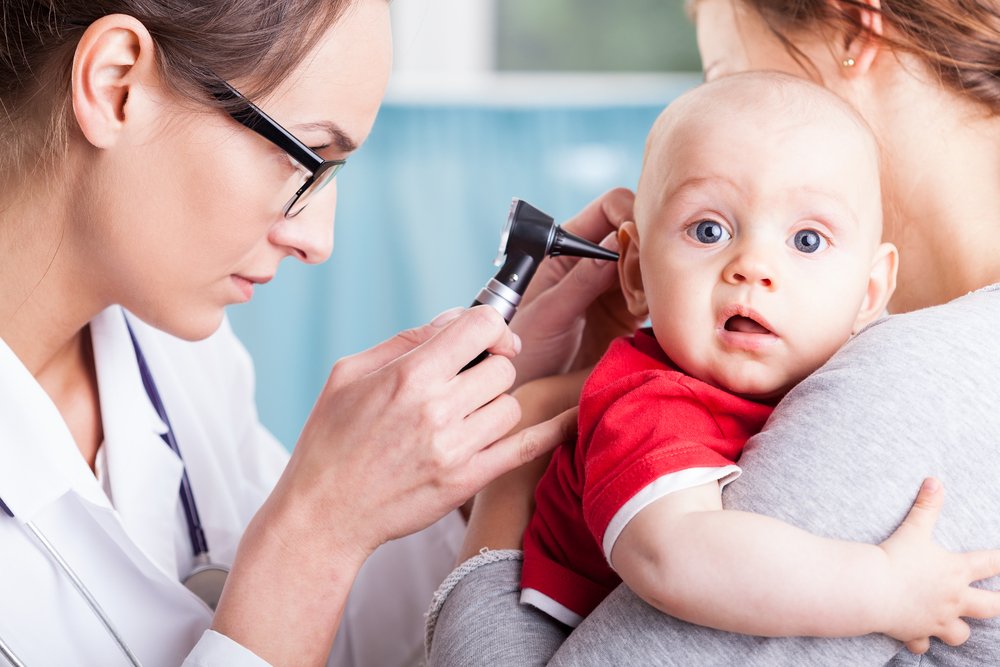Key points:
1. Ear infections (otitis) result from bacteria, viruses, or allergies blocking the Eustachian tube, often after colds, affecting kids mostly.
2. Infants’ ear infections cause swelling, discomfort; usually resolve in days or weeks, sometimes needing antibiotics.
3. Recurrent ear infections can harm hearing; seeing a doctor is vital, especially with frequent cases.
4. Infections arise from Eustachian tube, adenoid size, daycare, family history; symptoms include pain, sleep issues; relief via medical advice, warm compresses, following pediatrician.
Ear infections, also known as otitis or middle ear infection, are caused by bacteria, viruses, or allergies. They cause a blockage in the Eustachian tube (part of the ear) that affects the middle ear. They usually emerge after a cold or other respiratory infection. These infections are highly common in children and are one of the reasons they often go to the doctor.
When babies have ear infections, the middle part becomes swollen and may fill up with fluid. This can be very uncomfortable for children. Most of the time, these infections get better on their own. Usually, the symptoms subside after a few days and in one or two weeks’ time there are no symptoms or discomfort present at all. Sometimes there is even no need to administer medication, but occasionally doctors may recommend antibiotics to treat the infection.
On the other hand, chronic ear infections may lead to a hearing problem. Therefore, it is important to notify your doctor if your child has an ear infection, especially if you notice that it occurs frequently.
What are the causes of ear infections?
Infections are more common within the first two to four years of life. This is mainly due to the following reasons:
- The Eustachian tubes are shorter and more horizontal, which makes the entry of bacteria or virus easier. In addition, if the tubes are narrow and soft it favors the obstruction.
- The adenoid, or throat tissues, are large and can cover and clog a portion of the tubes.
- Attendance at daycare or preschool may increase the risk of infection.
- They are more common in boys than in girls, especially in ones who have a family history of infections.
What are the symptoms?
- Ear pain
- Trouble sleeping
- Unusual crying and restlessness
- Lack of appetite
- Leaking or accumulation of fluid in the ear
- Your baby doesn’t answer to quiet questions or sounds
- Your baby pulls at his ears
- Fever
- Nausea
- Vomiting
How can I decrease the pain?
- If you notice that your child has an ear infection, don’t hesitate to take him to the pediatrician.
- Place a warm cloth over the affected ear.
- Follow your pediatrician’s instructions, like taking prescribed medication or drops in the ear.
How do I reduce the risk my baby acquires an ear infection?
- Remember to wash your hands frequently and make sure that your little one’s hands are clean too.
- Keep up with vaccines, some of which help prevent infections.
- Avoid contact with people with an infection, especially of the respiratory tract.
- If you smoke, make sure that your child doesn’t inhale secondhand smoke, as this can contribute to ear infections.
Remember, ear pain is not always due to an infection; sometimes pain occurs when teeth are coming in, when your little one has an object stuck in his ear, or because of wax plugs. Whatever the reason, it’s best to contact your pediatrician to identify the cause and receive indications for an adequate treatment.








